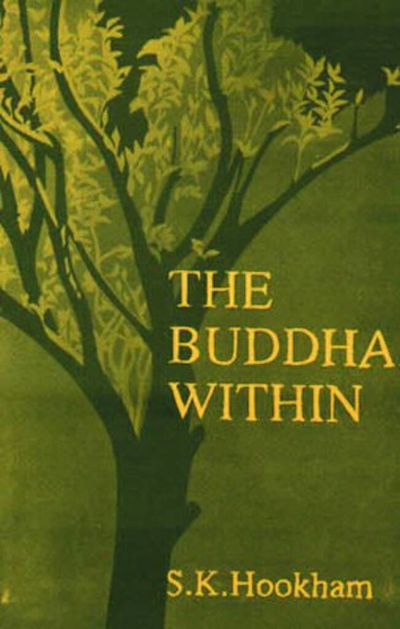The Buddha Within: Tathagatagarbha Doctrine according to the Shentong Interpretation of the Ratnagotravibhaga
No edit summary |
No edit summary |
||
| (10 intermediate revisions by 2 users not shown) | |||
| Line 1: | Line 1: | ||
{{Book | {{Book | ||
|BookPerson={{Book-person | |BookPerson={{Book-person | ||
|PersonPage=Hookham, S. | |PersonPage=Hookham, S. | ||
|PersonName=Shenpen Hookham | |PersonName=Shenpen Hookham | ||
}} | }} | ||
|FullTextRead=No | |FullTextRead=No | ||
|BookToc=* {{i|'''Acknowledgements'''|xiii}} | |BookToc=* {{i|'''Acknowledgements'''|xiii}} | ||
| Line 71: | Line 70: | ||
** {{i|i. The Three Dharmacakras|113}} | ** {{i|i. The Three Dharmacakras|113}} | ||
** {{i|ii. The Third Dharmacakra as Nitartha|114}} | ** {{i|ii. The Third Dharmacakra as Nitartha|114}} | ||
** {{i|iii. Kongtrul's Distinction Between the Tow Kinds of Nitartha Sutra of the Third Dharmacakra|117}} | ** {{i|iii. Kongtrul's Distinction Between the Tow Kinds of Nitartha Sutra of the<br>Third Dharmacakra|117}} | ||
** {{i|iv. Dolpopa's Anlaysis|121}} | ** {{i|iv. Dolpopa's Anlaysis|121}} | ||
** {{i|v. The Third Dharmacakra is Not Cittamatra|122}} | ** {{i|v. The Third Dharmacakra is Not Cittamatra|122}} | ||
| Line 77: | Line 76: | ||
** {{i|i. Rangtong Explanations of Neyartha and Nitartha|124}} | ** {{i|i. Rangtong Explanations of Neyartha and Nitartha|124}} | ||
** {{i|ii. The Terms "Neyartha" and "Nitartha"|126}} | ** {{i|ii. The Terms "Neyartha" and "Nitartha"|126}} | ||
** {{i|iii. The '' | ** {{i|iii. The ''Ratnagotravibhaga''—Neyartha or Nitartha?|127}} | ||
<br> | <br> | ||
* {{i|'''Section Two–Historical Background'''|133}} | * {{i|'''Section Two–Historical Background'''|133}} | ||
| Line 107: | Line 106: | ||
** {{i|ii. Maitreya|166}} | ** {{i|ii. Maitreya|166}} | ||
** {{i|iii. The Importance of the Maitreya-Asanga Connection|167}} | ** {{i|iii. The Importance of the Maitreya-Asanga Connection|167}} | ||
** {{i|iv. The RGV as a Synthesis of the Tathagatagarbha Sutras and the Prajnaparamita Sutras|169}} | ** {{i|iv. The RGV as a Synthesis of the Tathagatagarbha Sutras and the<br>Prajnaparamita Sutras|169}} | ||
** {{i|v. The ''Vyakhya'' (RGVV)|171}} | ** {{i|v. The ''Vyakhya'' (RGVV)|171}} | ||
** {{i|vi. Transmission to Tibet|171}} | ** {{i|vi. Transmission to Tibet|171}} | ||
* {{i|9.2 Matters Arising from the Introduction to Kongtrul's Commentary on the RGV. |172}} | * {{i|9.2 Matters Arising from the Introduction to Kongtrul's Commentary on the<br>RGV. |172}} | ||
** {{i|i. The Two Tibetan Transmission Lineages of the RGV|172}} | ** {{i|i. The Two Tibetan Transmission Lineages of the RGV|172}} | ||
** {{i|ii. Questions Arising from Kongtrul's Commentary|173}} | ** {{i|ii. Questions Arising from Kongtrul's Commentary|173}} | ||
| Line 117: | Line 116: | ||
** {{i|v. Rangjung Dorje and the Mahamudra-Dzogchen Synthesis|178}} | ** {{i|v. Rangjung Dorje and the Mahamudra-Dzogchen Synthesis|178}} | ||
<br> | <br> | ||
* {{i|'''Section Three–A Shentong Interpretation of the RGV and RGVV and a Translation of Kongtrul's Introduction to His RGV Commentary'''|179}} | * {{i|'''Section Three–A Shentong Interpretation of the RGV and RGVV and a<br>Translation of Kongtrul's Introduction to His RGV Commentary'''|179}} | ||
<br> | <br> | ||
* {{i|'''Chapter 10: A Shentong Interpretation of the RGV and RGVV–A Paraphrase With Comments''|181}} | * {{i|'''Chapter 10: A Shentong Interpretation of the RGV and RGVV–A Paraphrase<br>With Comments'''|181}} | ||
* {{i|10.1 The Title and its Implications |181}} | * {{i|10.1 The Title and its Implications |181}} | ||
* {{i|10.2 General Introduction to the Seven Vajra Bases |182}} | * {{i|10.2 General Introduction to the Seven Vajra Bases |182}} | ||
| Line 142: | Line 141: | ||
* {{i|'''Appendix 1: Works by Western Scholars'''|295}} | * {{i|'''Appendix 1: Works by Western Scholars'''|295}} | ||
<br> | <br> | ||
* {{i|'''Appendix 2: ''Prakrtisunyata, Svabhavasunyata'' and ''Parabhavasunyata'' in Rangtong and Shentong Terms'''|299}} | * {{i|'''Appendix 2: ''Prakrtisunyata, Svabhavasunyata'' and ''Parabhavasunyata'' in Rangtong<br>and Shentong Terms'''|299}} | ||
<br> | <br> | ||
* {{i|'''Appendix 3: Further Details on the Three ''Svabhava'' and the Three Kinds of Emptiness as Found in the SNS'''|303}} | * {{i|'''Appendix 3: Further Details on the Three ''Svabhava'' and the Three Kinds of<br>Emptiness as Found in the SNS'''|303}} | ||
<br> | <br> | ||
* {{i|'''Appendix 4: The ''Sandhinirmocanasutra: Résumé'' '''|311}} | * {{i|'''Appendix 4: The ''Sandhinirmocanasutra: Résumé'' '''|311}} | ||
<br> | <br> | ||
* {{i|'''Appendix 5: Some Points of Comparision Between Rangtong Commentators on RGV'''|317}} | * {{i|'''Appendix 5: Some Points of Comparision Between Rangtong Commentators on<br>RGV'''|317}} | ||
<br> | <br> | ||
* {{i|'''Appendix 6: The Five Dharmas of Maitreya'''|325}} | * {{i|'''Appendix 6: The Five Dharmas of Maitreya'''|325}} | ||
| Line 161: | Line 160: | ||
<br> | <br> | ||
* {{i|'''Bibliography'''|367}} | * {{i|'''Bibliography'''|367}} | ||
<br> | |||
* {{i|'''Index'''|397}} | |||
<br> | |||
* {{i|'''Tables'''|}} | |||
* {{i|'''8.1'''|152}} | |||
* {{i|'''8.2'''|153}} | |||
|AddRelatedTab=No | |AddRelatedTab=No | ||
|QuotesTabContent={{GetBookQuotes}} | |QuotesTabContent={{GetBookQuotes}} | ||
|BookParentPage=Secondary Sources | |||
}} | }} | ||
Latest revision as of 18:12, 22 February 2021
Tathagatagarbha—Buddha Nature—is a central concept of Mahayana Buddhism crucial to all the living practice traditions of Tibetan and Zen Buddhism. Its relationship to the concept of emptiness has been a subject of controversy for seven hundred years. Dr. Hookham's work investigates the divergent interpretations of these concepts and the way the TIbetan tradition is resolving them.
In particular she does this with reference to the only surviving Indian commentary on the Tathagatagarbha doctrine, the Ratnagotravibhaga. This text addresses itself directly to the issue of how to relate the doctrine of emptiness (the illusory nature of the world) to that of the truly existing, changeless Absolute (the Buddha Nature).
This is the first work by a Western writer to present an analysis of the Shentong tradition based on previously untranslated sources. The Shentong view rests on meditative experience that is inaccessible to the conceptualizing mind. It is deeply rooted in the sutra tradition of Indian Buddhism and is central to an understanding of the Mahamudra and Dzogchen traditions and Tantric practice among the Kagyupas and Nyingmapas.
(Source: SUNY Press)
| Citation | Hookham, S. K. The Buddha Within: Tathagatagarbha Doctrine according to the Shentong Interpretation of the Ratnagotravibhaga. SUNY Series in Buddhist Studies. Albany: State University of New York Press, 1991. |
|---|---|


